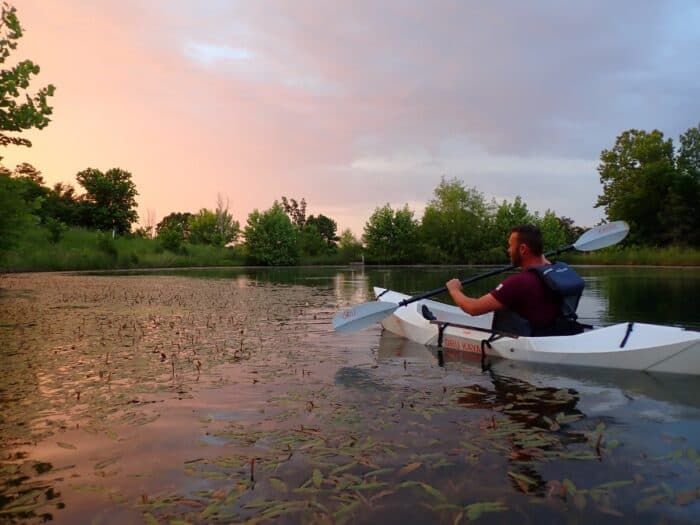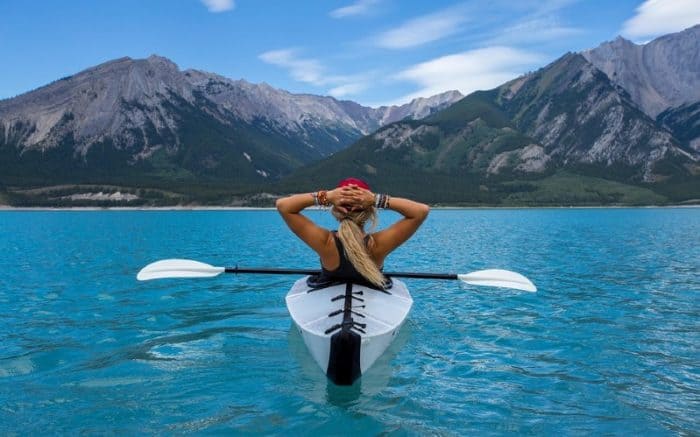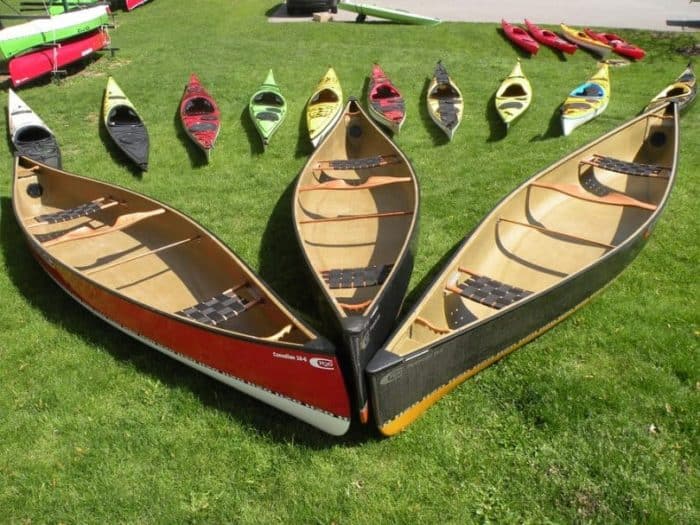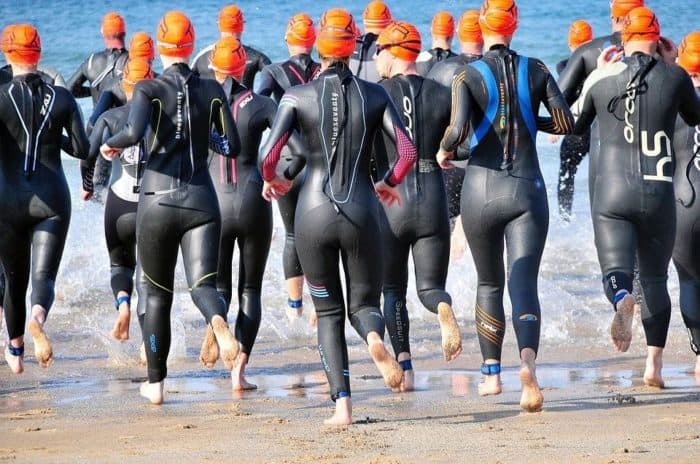How to Choose a Kayak – Buying Guide
Kayaking is a great sport. It is a low impact activity with a wide range of benefits for your cardiovascular health, fitness level, muscle strength – particularly in the arms, chest, shoulders, and back – and your overall flexibility.
It is not only great for your physical health; it works wonders for your mental and psychological well-being as well. Besides, it is the perfect way to enjoy our scenic waterways.
Whatever your reason for wanting to take up the sport might be, you need to ensure that you pick the best kayak for the activity you intend to use it for. What’s suitable for one person may not necessarily be the best option for someone else.
You need to think about who will be using the kayak, where and how often it’ll be used, the experience level of the use, how to transport it to the water, etc.
Without further ado, here’s the ultimate buying guide on how to choose a kayak.
How to Choose a Kayak – Questions You Need to Ask
Before you embark on picking a kayak, here are a couple of things you need to keep in mind throughout the entire process.
- Who are you buying the kayak for? Is it for kids or adults? Is it for the entire family? Do you intend to use it to go fishing with your friends? How tall or heavy are the users? Would you describe your experience level as beginner, intermediate, or advanced?
- Where do you intend to use the kayak? Will you be venturing out into narrow river rapids, or wide still waters?
- When do you plan to go kayaking? Will it be on warm summer days or cold winter weather?
- How often do you intend to use it? Do you plan to take it out on the water every other weekend? Or a handful of times in the year?
- How will you transport to and from the water? Will you need to mount roof racks on your car to do it? Will you need a trailer to tow it? Would you rather get one that easily fits into the trunk of your car?
These are just a few of the things you need to think about to make sure you buy the right kayak for your needs. With that being said, let’s explore the different types of kayaks that exist as defined by their uses.
Choosing the Right Kayak Based on Activities
One way to group kayaks would be based on their use. Below are some of the different types to consider.
Recreational Kayaks
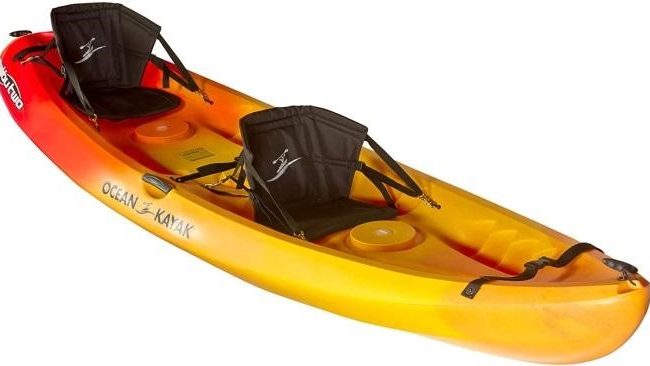
If you intend to explore a wide range of water environments, then a recreational kayak is precisely what you need to do it in. These types of vessels are typically sit-on-top kayaks and are a top choice for weekend warriors and families with kids.
Most of them come with multiple sitting positions and accompanying footrests to allow paddlers of different sizes to have a go.
Features
- Suited for individuals looking to paddle for fun
- They are usually comfortable, easy to steer, and quite stable on the water
- Perfect for kids and kayaking beginners
- Great for open coastal water, rivers, and lakes
- Sit-in recreational kayaks suit cold days in open ocean waters and still water lakes
Sea Kayaks

These are usually sit-in kayaks. They have a narrow body design, which makes them faster than their recreational counterparts. More often than not, they are fitted with additional accessories and gear like outriggers, spray skirts, and rudders.
These work well to add on to the overall stability of the vessel and keep them on course in offshore paddling conditions.
Features
- They may have a high or low rocker. Higher rockers make the kayak more maneuverable and are well suited for steep waves. However, this also makes them slower.
- They may have a high volume – which is suitable for larger and heavier individuals or low volume. These are usually slim and float very low in the water, so you can expect a wet ride.
- They have comfortable seats, which is ideal for long days out on the waters
- They are narrow, which means they track very well. So, you’ll be able to keep them straight on the watercourse.
- They may have a skeg or a rudder. Skegs are deployed in the cockpit and usually come out in the back of kayaks. These come in handy when you’re trying to keep the vessel on a straight path, particularly in windy conditions.
Rudders can be deployed and dropped in the water. You can then use your feet to control their direction. These come in handy when steering the boat.
Touring Kayaks
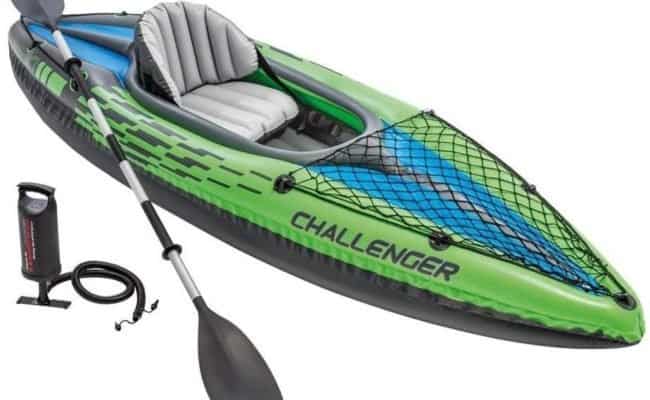
If you plan to go for all-day sightseeing activities to explore lakes, rivers, and other waterways, a touring kayak is how to do it. They come in both sit-in and sit-on-top configurations and provide ample storage and comfort.
This makes them ideal for traveling long distances and for long days spent on the water. They are a great way to access secluded areas that have no roads or trails. Simply get into your kayak and glide up or downstream to see what’s out there.
Features
- They have a waterproof storage space inside, which is ideal for keeping food and any other camping supplies you may have
- They usually have a weight limit, so you’ll need to weigh your gear beforehand to decide what to bring with you
- You can add an anchor to secure them in place during overnight trips or when breaking for lunch
- Their short length makes it easy to get in and out of the vessel
- Well-suited for both still-water beginner kayakers, as well as experienced individuals
- They are wider and, therefore, offer more stability and balance
- Several models also come with a foot-controlled rudder to make it easy to steer the vessel
Fishing Kayaks

These are modified or custom-built yaks that usually come fitted with fishing accessories like rod and paddle holders, and mounts for devices like chart plotters and fish finders. They come with ample internal storage space for your fishing gear, accessories, and, more importantly, your catch.
Fishing yaks come in either sit-in or sit-on-top configurations. The choice of one over the other ultimately depends on the water and weather conditions you’re likely to be experiencing while fishing. The best thing about them is just how easy they are to maintain. Certainly easier than an entire fishing boat!
Features
- Provides quick and easy access to deep-water fishing
- They are durable, lightweight, and easy to maneuver
- They come with built-in rod and paddle holders, and electronic device mounts
- Some models come with backrests with built-in rod holders, although you can buy them separately
- Has ample storage space to store gear, bait, and all the fish you catch
- Shorter and wider fishing kayaks are usually easy to steer and offer more stability when getting in and out of them
- Longer and narrower ones are more suited for longer distances since they are much faster
Technically speaking, you can use any water vessel for fishing. A fishing kayak, however, makes your fishing expedition a lot easier, comfortable, and pleasurable.
Inflatable kayaks
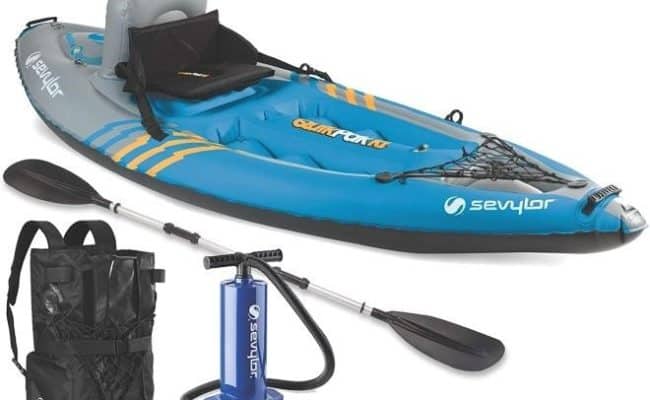
Inflatable kayaks are by far the most common variety of kayaks you’ll come across. They are a top choice for kayaker tourers and campers, given how lightweight and easy to transport they are.
You can easily carry them in a backpack in their deflated form. You don’t need any roof racks or trolleys to carry them. They are versatile and surprisingly sturdy.
The recreational models aren’t designed to go anywhere fast and are well suited for close-to-shore use. Their wider and rugged variants are ideal for flowing rivers since they can bounce off obstacles. Others are designed for serious touring.
Features
- You have to use a manual pump to inflate it any time you want to use it
- Can be deflated to fit inside a backpack or the trunk of your car
- Steering is much slower and harder compared to hard kayaks
- Can be a single or double (tandem) kayak built for one or two users respectively
- Can be used on still and gently rapid waters
- May not be as durable as hard kayaks
Surf Skis

These are probably the most familiar types of kayaks to most people. You’ve probably seen lifesavers use them at the beach.
Nonetheless, they are fast becoming a popular choice for kayakers, which is why you’ll find them in the kayak category of most outdoor recreational equipment stores.
Features
- Offers more stability than conventional kayaks
- They have adjustable foot pedals
- Well suited for both low and high volume paddlers
- Easy to remount
- They are much lighter than conventional hard kayaks
Racing Kayaks

These are designed to be speed machines. They are built from lightweight composite materials like carbon fiber, Kevlar, and fiberglass. They are made for racing at high speeds in a straight line in calm, still waters.
Features
- They are long, narrow, and extremely lightweight, which makes them ideal reaching maximum racing speeds
- They are generally harder to balance and steer, so they are best reserved for advanced and highly experienced kayakers
Sit-In vs. Sit-On-Top Kayaks
So, far we’ve mentioned the terms “sit-in” and “sit-on-top” vessels. But what exactly is the difference between them? Well, it has everything to do with the cockpit.
Sit-In Kayaks

Sit-in kayaks are the traditional-style kayaks that feature an enclosed cockpit. You can use them with a compatible spray skirt that you wear around your waist to keep the water out. Experienced kayakers can even do a 360-degree roll in the water with the skirt on, without letting any water into the cockpit.
Whitewater paddlers and kayakers who tend to spend a substantial portion of their time in cold water climates prefer sit-in kayaks because of how warm they are inside when used with a spray skirt.
Sit-On-Top Kayaks
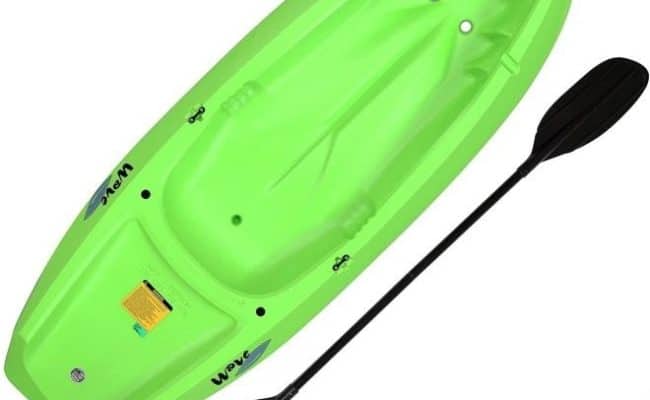
Sit-on-top kayaks, on the other hand, feature an open cockpit with an enclosed hull. So, you don’t have to worry about them filling up with water if they capsize.
They are well suited to a wider range of on-water activities and are often used for fishing and recreational activities. If you live in hot climates, you’ll especially love the feeling of having your legs out to the warm air.
Which One Should I Pick
To figure this out, you first need to understand their performance capabilities. Sit-in kayaks are designed to travel faster with more focus on comfort, performance, and suitability for a wide range of environments.
Sit-on-top kayaks, on the other hand, are usually wider than their sit-in counterparts, with a focus on safety and stability. So, they are significantly slower as a result.
Keep in mind though that some categories of kayaks in the market today are an overlap between the two varieties. The perfect examples of this are fishing kayaks. So, pick and choose depending on what matters the most to you.
Other Factors to Consider When Refining Your Search
So far, you’ve narrowed down your choice based on what you intend to use the kayak for, and the style of the cockpit. Other things you also need to consider include:
- Width – This affects the kayak’s maneuverability and stability. Wider yaks, for instance, are a lot harder to turn, which may also make it harder for kids to steer. Narrower yaks, on the other hand, tend to feel more stable and offer more speed.
- Length – This affects the kayak’s overall stability, as well as how well it maintains speed and tracks in the water. Longer yaks are better for off-shore expeditions but may require rudders for maneuverability. Shorter yaks, on the other hand, are much easier to steer, making them a top choice for whitewater kayakers.
- Weight – This affects the yak’s maneuverability, speed, and of course, how easy it is to transport. You should also ensure that the model you pick has a good carrying capacity to accommodate both your weight and that of your gear, particularly if you’re in the market for a touring model.
- Color – Well, pick whatever looks good to you. It has no bearing on the performance of the yak.
- Price – Price is usually affected by several things, although the construction material used in their manufacture is no doubt the biggest determinant. Pick something that fits your budget, is well suited to your kayaking ability, and suitable for what you intend to use it for.
Don’t Rush the Process
With all the different options for yaks out there, picking the right one can no doubt be a daunting task. So, take your time, learn how to choose a kayak based on your specific needs, and hit the water when you’re ready. We hope this guide helps!
